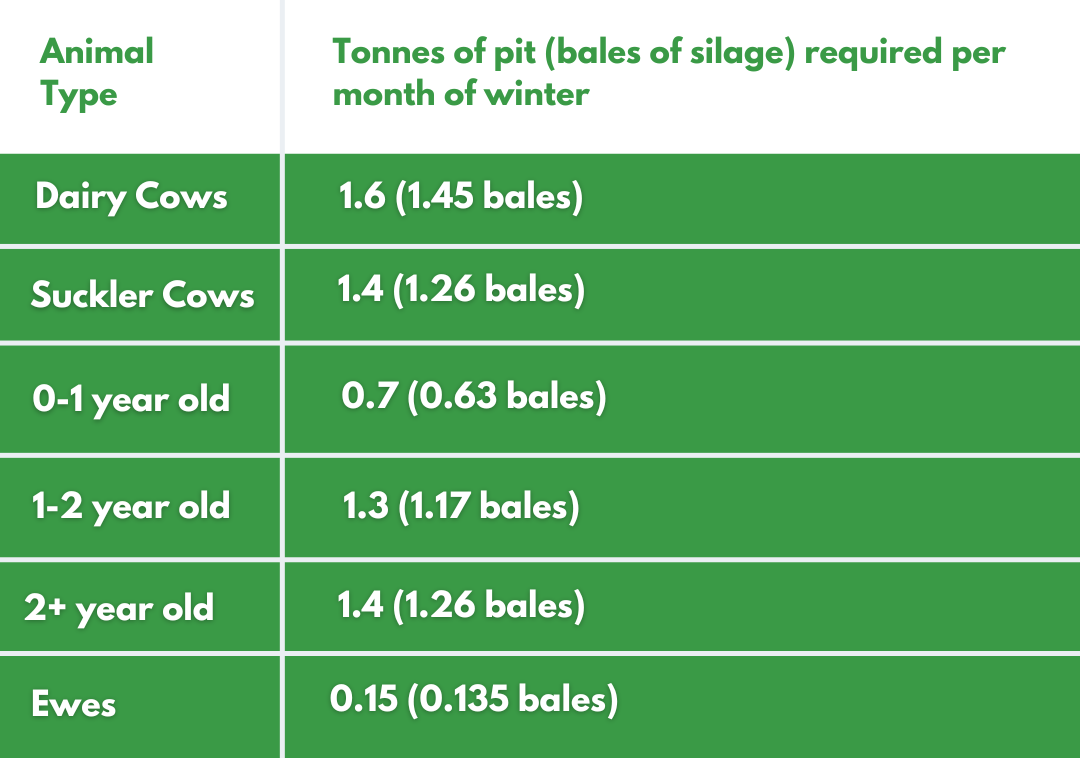Over the last number of weeks, growth has slowed significantly in many areas due to soil moisture deficits. This has resulted in many of us resorting to filling the gap with silage on farm and depleting our reserves. With planned feeding continuing in some cases to build covers of grass for next spring, assessing available forage reserves for winter 2022/23 must be prioritised.
As a starting point, it is important to analyse the quality of feed available on farm as this will help inform our decisions regarding winter feed plans. Where quality is high, options are much more plentiful regarding being able to stretch silage reserves where deficits occur.
Fodder Budget
Firstly, we must know the quantity of feed available to us in the yard. The below formula will help calculate the volume of silage in the pit.
Length x breadth x average height in metres, divided by 1.35 = tonnes of grass silage
Or
Length x breadth x average height in feet, divided by 45 = tonnes of grass silage (typical precision chop grass silage)
Secondly, we will need to calculate what the requirement for winter could be. This will include knowing total stock numbers that will be carried through the winter and having a realistic estimate at the length of winter on your farm (include a 3-week buffer always).

Tailored Advice
Once we know what we have, relative to what we need, a deficit or surplus will become clear. Every farm scenario will be different, and the advice here should be farm specific, based on feeding equipment/facilities, feed barrier space, body condition score at dry off etc.). One factor that is becoming apparent on farm currently is prioritising milking cow forage for next spring as part of the budget.
For more advice on conducting a winter fodder budget and analysis, contact your local Agritech Sales Advisor.

